Xiaomi Redmi Note 7
$146 | 12999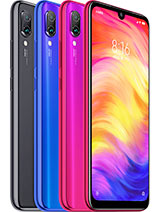
- 6.3" 1080x2340 pixels
- 48MP 1080p
- 3-6GB RAM Snapdragon 660
- 4000mAh Li-Po
Phone Finder
- Acer alcatel Allview Amazon Amoi Apple Archos Asus AT&T Benefon BenQ BenQ-Siemens Bird BlackBerry Blackview BLU Bosch BQ Casio Cat Celkon Chea Coolpad Cubot Dell Doogee Emporia Energizer Ericsson Eten Fairphone Fujitsu Siemens Garmin-Asus Gigabyte Gionee Google Haier HMD Honor HP HTC Huawei i-mate i-mobile Icemobile Infinix Innostream iNQ Intex itel Jolla Karbonn Kyocera Lava LeEco Lenovo LG Maxon Maxwest Meizu Micromax Microsoft Mitac Mitsubishi Modu Motorola MWg NEC Neonode NIU Nokia Nothing Nvidia O2 OnePlus Oppo Orange Oscal Oukitel Palm Panasonic Pantech Parla Philips Plum Posh Prestigio QMobile Qtek Razer Realme Sagem Samsung Sendo Sewon Sharp Siemens Sonim Sony Sony Ericsson Spice T-Mobile TCL Tecno Tel.Me. Telit Thuraya Toshiba Ulefone Umidigi Unnecto Vertu verykool vivo VK Mobile Vodafone Wiko WND XCute Xiaomi XOLO Yezz Yota YU ZTE
Xiaomi Redmi Note 7 Summary
Earlier this year, Redmi officially separated into a separate sub-brand with its own business strategy. The Redmi Note 7 was the first smartphone to launch after this change and it quickly gathered attention when it was equipped with a resolution camera up to 48MP while having the other strengths of the Redmi series, which is high capacity battery and good hardware configuration in the price range. Moreover, even though the cameras of the Redmi Note 7 still have some issues, but it exceeds our expectations for a budget smartphone.
Display
The Redmi Note series has been constantly changing in screen design in recent years. The Redmi Note 5 was one of Xiaomi's first smartphones to switch to an 18:9 aspect ratio, Redmi Note 6 has a "notch" screen and now, the Redmi Note 7 switches to the waterdrop notch design.
The waterdrop part of the Redmi Note 7 only contains the selfie camera so the area for the notification bar is very spacious, allowing to display a lot of information. However, the "chin" is still a bit thick so the screen-to-body ratio isn't improved significantly compared to the previous generations. Specifically, the screen-to-body ratio of the Redmi Note 7 reached 81.4%, still a little thicker than that of the Mi 8 Lite (82.5%).
The display quality of Redmi Note 7 is similar to the previous generations. Its IPS LCD panel offers a fairly wide viewing angle and standard color reproduction. The maximum brightness is not too high and is sufficient for most situations but it will be difficult to use outdoors.
Performance
At Rs Rs. 9,999 for 4GB RAM / 64GB version of internal memory, Redmi Note 7 is one of the few smartphones that owns the cheapest Snapdragon 660 today. This is an attractive factor for young users who regularly play mobile games. Many products using Snapdragon 660 processor with the same screen resolution and memory that we recently evaluated such as Xiaomi Mi 8 Lite or Asus Zenfone Max Pro M2 can handle the daily tasks well or even heavy-graphics games.
With two games Dead Trigger 2 and Warhammer 40,000: FreeBlade, Redmi Note 7 can play smoothly at high graphics settings with the fps always staying stably at 59-60 FPS when measured by GameBench.
PUBG Mobile at the highest graphics setting has caused a bit of difficulty for the Redmi Note 7. The average FPS reached 26, with not too high fps stability (83%). We recommend users to lower the device. up images to make the experience smoother. When switching to the low graphics setting, the game was much smoother, fps was fixed at 30 with 92% stability when measured by GameBench.
Regarding software, Redmi Note 7 is preloaded with MIUI 10 which fully supports the familiar features of the Xiaomi family like the Second space to store private data, dual apps to run two Facebook or Messenger accounts ... on the same phone, lock an app with password protection and support a variety of gestures.
Battery
Redmi Note 7 inherits a high-capacity 4,000 mAh battery from its predecessor Redmi Note 6 Pro. This battery capacity is sufficient for users to use comfortably during the day.
The highlight of the Redmi Note 7 is that it supports Quick Charge 4.0, so charging the 4,000 mAh battery is no longer a problem. However, the box comes with just a 5V-2A charger, meaning users will have to buy a quick charger separately to take advantage of the fast charging technology.
Camera
The resolution race on smartphones that seemed to be over for a long time has suddenly returned. The Redmi Note 7 is one of many affordable and mid-range phones currently equipped with 48MP cameras. However, as we all know, having more megapixels doesn't necessarily turn into better photos. The Redmi Note 7 uses Samsung's ISOCELL GM1 sensor, while the Redmi Note 7 Pro uses the Sony IMX586 one.
By default, the 48MP camera of the Redmi Note 7 will take photos at 12MP resolution. Of course, the device also allows shooting 48MP photos with the 48MP mode. But when this mode is turned on, you will have to sacrifice AI and HDR scene recognition. Not just that, it also takes longer time to capture photos at 48MP resolution, up to a few seconds even in good lighting conditions, and a significantly higher size as well, about 2.5 times higher than at 12MP resolution. But what is more important is that the quality difference between 12MP and 48MP photos is negligible, very difficult to notice.
In bright enough conditions, the camera of Redmi Note 7 gives good quality in the price range, both in terms of detail, bright range, and portrait mode. However, photos taken by this phone have some issues such as bad color reproduction, often darker than reality.
When compared to the Redmi Note 7 Pro using Sony's sensor, you can easily see the difference. Photos taken from the Redmi Note 7 Pro have better color reproduction and a wider dynamic range.
In low light, the handset has its own Night Mode, which will take multiple photos for longer exposure to produce brighter and more detailed images. In fact, night mode photos produce far better results than regular shots, capturing more details in darker areas, with more vivid colors. However, this image is only suitable for shooting still scenes because the processing time is quite long, up to 4 seconds in low light conditions. Taken with normal mode, the image quality is only average, lots of noise, and low detail.
Xiaomi Redmi Note 7 Full Specifications
- Dollas $146 Buy in Flipkart >
- Rupee ₹12999 Buy in Flipkart >
- Technology GSM / HSPA / LTE
- 2G bands GSM 850 / 900 / 1800 / 1900 - SIM 1 & SIM 2
- 3G bands HSDPA 850 / 900 / 1700(AWS) / 1900 / 2100 - Global
- 1, 3, 5, 7, 8, 34, 38, 39, 40, 41
- 4G bands 1, 2, 3, 4, 5, 7, 8, 20, 28, 38, 40 - Global
- Speed HSPA 42.2/5.76 Mbps, LTE-A (2CA) Cat12 600/150 Mbps
- Announced 2019, January
- Status Available. Released 2019, January
- Dimensions 159.2 x 75.2 x 8.1 mm (6.27 x 2.96 x 0.32 in)
- Weight 186 g (6.56 oz)
- Build Glass front (Gorilla Glass 5), glass back (Gorilla Glass 5), plastic frame
- SIM Hybrid Dual SIM (Nano-SIM, dual stand-by)
- Type IPS LCD capacitive touchscreen, 16M colors
- Size 6.3 inches, 97.4 cm2 (~81.4% screen-to-body ratio)
- Resolution 1080 x 2340 pixels, 19.5:9 ratio (~409 ppi density)
- Protection Corning Gorilla Glass 5
- OS Android 9.0 (Pie); MIUI 11
- Chipset Qualcomm SDM660 Snapdragon 660 (14 nm)
- CPU Octa-core (4x2.2 GHz Kryo 260 Gold & 4x1.8 GHz Kryo 260 Silver)
- GPU Adreno 512
- Card slot microSDXC (uses shared SIM slot)
- Internal 32GB 3GB RAM, 64GB 4GB RAM, 64GB 6GB RAM, 128GB 4GB RAM
- eMMC 5.1
- Modules 48 MP, f/1.8, (wide), 1/2.0", 0.8µm, PDAF 5 MP, f/2.2, (depth) or 12 MP, f/2.2, (wide), 1/2.9", 1.25µm, PDAF 2 MP, f/2.4, (depth)
- Features Dual-LED flash, HDR, panorama
- Video 1080p@30/60/120fps, (gyro-EIS)
- Modules 13 MP, f/2.0, (wide), 1/3.1", 1.12µm
- Features HDR
- Video 1080p@30fps
- Loudspeaker Yes
- 3.5mm jack Yes
- WLAN Wi-Fi 802.11 a/b/g/n/ac, dual-band, Wi-Fi Direct, hotspot
- Bluetooth 5.0, A2DP, LE
- GPS Yes, with A-GPS, GLONASS, BDS
- Infrared port Yes
- Radio FM radio, recording
- USB 2.0, Type-C 1.0 reversible connector
- Sensors Fingerprint (rear-mounted), accelerometer, gyro, proximity, compass
- Non-removable Li-Po 4000 mAh battery
- Charging Fast charging 18W Quick Charge 4
- Colors Blue, Black, Twilight Gold, White
- Models M1901F7G, M1901F7H, M1901F7I
- SAR 1.15 W/kg (head) 1.17 W/kg (body)
- SAR EU 0.59 W/kg (head) 1.27 W/kg (body)
- Performance AnTuTu: 139075 (v7) GeekBench: 5411 (v4.4) GFXBench: 7.7fps (ES 3.1 onscreen)
- Display Contrast ratio: 1338:1 (nominal), 2.893 (sunlight)
- Camera Photo
- Loudspeaker Voice 69dB / Noise 71dB / Ring 90dB
- Audio quality Noise -90.7dB / Crosstalk -94.5dB
- Battery life Endurance rating 108h
Xiaomi Redmi Note 7 News
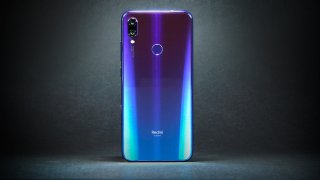
Mobile - Feb 29, 2020
Xiaomi Redmi Note 7 Running Android 11 On Geekbench; Upgrade Incoming?
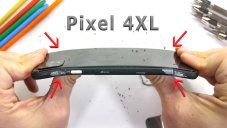
Mobile - Jan 21, 2020
Redmi Note 7 & Google Pixel 4 XL Are Most Fragile Smartphones In 2019
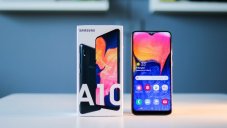
Mobile - Oct 05, 2019
Here Are Top 10 Best-Selling Smartphones In The World In 2019
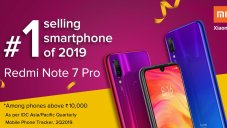
Mobile - Sep 03, 2019
Redmi Note 7 Pro As Best-Selling Smartphone Above Rs. 10,000: IDC Report
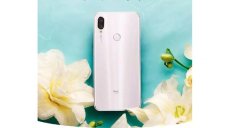
Mobile - Jul 18, 2019











